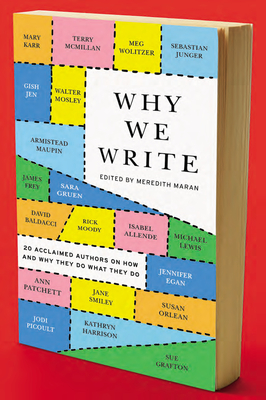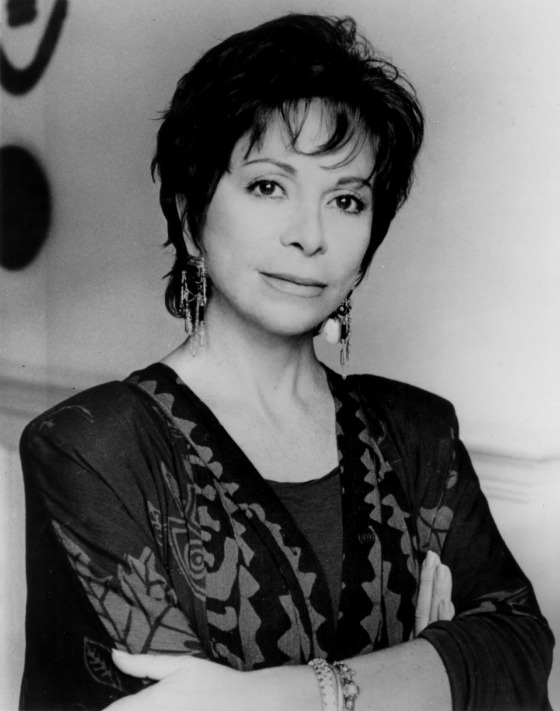22 Φεβρουαρίου 2013
21 Φεβρουαρίου 2013
το πραγματικό
το αληθινό
και το ζωγραφιστό
είναι όρθια
και ίσως μπορούν να αλληλεπιδρούν
το μεγαλο μελανι της χαιδως
είμναι πολύ καλό και μου δημιουργεί πολλές ιδέεσ για συνεχεια
σε πρώτο και δε'[υτερο επίπεδο
ασκηση πιθανη
http://www.youtube-nocookie.com/embed/cS8z4Nv3-k8
Το έργο αυτό απασχόλησε τον Μάνο Χατζιδάκι τα τρία τελευταία χρόνια της ζωής του. Με τον ενδεικτικό υπότιτλο «Η αμαρτία είναι βυζαντινή και ο έρωτας αρχαίος», περιέχει δεκαπέντε μουσικά ποιήματα ερμηνευμένα με λαϊκή καθαρότητα από τον Ανδρέα Καρακότα. Στο πιάνο η Ντόρα Μπακοπούλου.
Το έργο είναι «αφιερωμένο» από τον Μάνο Χατζιδάκι σε όσους ακόμη μπορούν να διαβρωθούν από την μουσική και το τραγούδι.
Το ποίημα είναι του Ντίνου Χριστιανόπουλου
Αδέσποτο στους δρόμους τριγυρνάει
ένα μικρό γαϊδούρι μοναχό,
κανένα χορταράκι μασουλάει
γιατί `ναι πεινασμένο το φτωχό
Κοιτάει τ’ αυτοκίνητα θλιμμένο
και σκύβει το κεφάλι καταγής,
κι εκείνα σταματούνε να περάσει
σα λείψανο μιας άλλης εποχής
Καημένο γαϊδουράκι, που διαβαίνεις
χωρίς ποτέ να χάρηκες στοργή,
ποιος ξέρει σε ποιο δρόμο κάποια μέρα
μια ρόδα θα σου πάρει τη ζωή
20 Φεβρουαρίου 2013
- The migration of concepts from psychoanalysis into the study of visual art.
- The study of artists who are themselves influenced by psychoanalysis.
- Similarities/differences between art and the analytic situation.
- The role of the object in psychoanalytic studies of visual art.
- The role of the viewer in psychoanalytic studies of visual art.
- Combining psychoanalytic ideas with other forms of interpretation.
- Psychoanalysis and the artist-viewer relationship.
- The role of aesthetic experience in psychoanalysis.
- The critique of particular studies which explore artworks psychoanalytically.
- The psychoanalytic interpretation of technical processes of artistic production.
- The relation between visual art and unconscious phantasy (Kleinian) or fantasy (Lacan,
Zizek).
- The use of psychoanalytic ideas/thinkers that have generally been overlooked in art history (e.g. Bion, Winnicott, Laplanche, Milner).
act courses have a strong focus on:
- Dialogues in art, architecture, urbanism, and the production of space
- Interventions in public spaces and the development of anti-monuments and new instruments of collective memory
- Interrogative design, body wear and nomadic devices
- Interfaces between visual art practices, the performative and the sonic
- Experiments with truth – using photographic and time-based media to blur conventional boundaries between documentary and fiction
- Art and Science / Science and Art – research-based artistic practices
download the sound for
19 Φεβρουαρίου 2013
http://embed.ted.com/talks/isabel_allende_tells_tales_of_passion.html
Order to the Chaos of Life: Isabel Allende on Writing
by Maria Popova
 Literary history is ripe with eloquent attempts to answer the ever-elusive question of why writers write. For George Orwell, it resulted from four universal motives. Joan Didion saw it as precious access to her own mind. ForDavid Foster Wallace, it was about fun. Joy Williams found in it a gateway from the darkness to the light. For Charles Bukowski, it sprang from the soul like a rocket. In Why We Write: 20 Acclaimed Authors on How and Why They Do What They Do (public library), which also gave us Mary Karr’s poignant answer, celebrated Chilean American authorIsabel Allende offers one of the most poetic yet practical responses to the grand question.
Literary history is ripe with eloquent attempts to answer the ever-elusive question of why writers write. For George Orwell, it resulted from four universal motives. Joan Didion saw it as precious access to her own mind. ForDavid Foster Wallace, it was about fun. Joy Williams found in it a gateway from the darkness to the light. For Charles Bukowski, it sprang from the soul like a rocket. In Why We Write: 20 Acclaimed Authors on How and Why They Do What They Do (public library), which also gave us Mary Karr’s poignant answer, celebrated Chilean American authorIsabel Allende offers one of the most poetic yet practical responses to the grand question.
I need to tell a story. It’s an obsession. Each story is a seed inside of me that starts to grow and grow, like a tumor, and I have to deal with it sooner or later. Why a particular story? I don’t know when I begin. That I learn much later. Over the years I’ve discovered that all the stories I’ve told, all the stories I will ever tell, are connected to me in some way. If I’m talking about a woman in Victorian times who leaves the safety of her home and comes to the Gold Rush in California, I’m really talking about feminism, about liberation, about the process I’ve gone through in my own life, escaping from a Chilean, Catholic, patriarchal, conservative, Victorian family and going out into the world.
It’s so important for me, finding the precise word that will create a feeling or describe a situation. I’m very picky about that because it’s the only material we have: words. But they are free. No matter how many syllables they have: free! You can use as many as you want, forever.
I try to write beautifully, but accessibly. In the romance languages, Spanish, French, Italian, there’s a flowery way of saying things that does not exist in English. My husband says he can always tell when he gets a letter in Spanish: the envelope is heavy. In English a letter is a paragraph. You go straight to the point. In Spanish that’s impolite. Reading in English, living in English, has taught me to make language as beautiful as possible, but precise. Excessive adjectives, excessive description — skip it, it’s unnecessary. Speaking English has made my writing less cluttered. I try to readHouse of the Spirits now, and I can’t. Oh my God, so many adjectives! Why? Just use one good noun instead of three adjectives.
Fiction happens in the womb. It doesn’t get processed in the mind until you do the editing.
I start all my books on January eighth. Can you imagine January seventh? It’s hell. Every year on January seventh, I prepare my physical space. I clean up everything from my other books. I just leave my dictionaries, and my first editions, and the research materials for the new one. And then on January eighth I walk seventeen steps from the kitchen to the little pool house that is my office. It’s like a journey to another world. It’s winter, it’s raining usually. I go with my umbrella and the dog following me. From those seventeen steps on, I am in another world and I am another person. I go there scared. And excited. And disappointed — because I have a sort of idea that isn’t really an idea. The first two, three, four weeks are wasted. I just show up in front of the computer. Show up, show up, show up, and after a while the muse shows up, too. If she doesn’t show up invited, eventually she just shows up.
I correct to the point of exhaustion, and then finally I say I give up. It’s never quite finished, and I suppose it could always be better, but I do the best I can. In time, I’ve learned to avoid overcorrecting. When I got my first computer and I realized how easy it was to change things ad infinitum, my style became very stiff.
My daughter, Paula, died on December 6, 1992. On January 7, 1993, my mother said, ‘Tomorrow is January eighth. If you don’t write, you’re going to die.’ She gave me the 180 letters I’d written to her while Paula was in a coma, and then she went to Macy’s. When my mother came back six hours later, I was in a pool of tears, but I’d written the first pages of Paula. Writing is always giving some sort of order to the chaos of life. It organizes life and memory. To this day, the responses of the readers help me to feel my daughter alive.
Storytelling and literature will exist always, but what shape will it take? Will we write novels to be performed? The story will exist, but how, I don’t know. The way my stories are told today is by being published in the form of a book. In the future, if that’s not the way to tell a story, I’ll adapt.
- It’s worth the work to find the precise word that will create a feeling or describe a situation. Use a thesaurus, use your imagination, scratch your head until it comes to you, but find the right word.
- When you feel the story is beginning to pick up rhythm—the characters are shaping up, you can see them, you can hear their voices, and they do things that you haven’t planned, things you couldn’t have imagined—then you know the book is somewhere, and you just have to find it, and bring it, word by word, into this world.
- When you tell a story in the kitchen to a friend, it’s full of mistakes and repetitions. It’s good to avoid that in literature, but still, a story should feel like a conversation. It’s not a lecture.
http://www.youtube.com/watch?v=hXY_ML3oMwI&feature=share&list=AL94UKMTqg-9AOmHp-ioQW7kqRYDHkVbPo
http://www.archiact.com/content/links
http://thefunambulist.net/2012/06/30/foucault-episode-7-questioning-the-heterotopology/#more-11032
http://arenaofspeculation.org/2012/11/25/re-lifta/
Love is the collective urge to seize freedom by any means necessary.